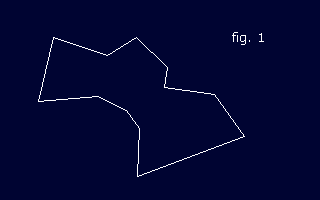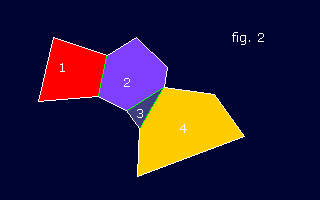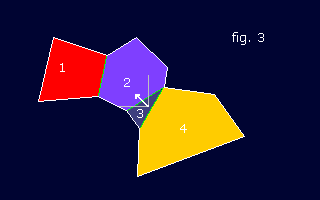| menu |
|
home contact guestbook |
| downloads/misc |
|
demos/intros wolfenstein 3d miscellaneous bundeswehr |
| sourcecode |
|
mc68000 math lib 32 bytes sin-gen 24 bit tga-viewer blitter example lz77 packer lz78 packer protracker replayer |
|
rendering textured indoor scenes such as in games like doom or quake (atari ports of these id-classics can be found at patrice mandin's site) usually involves a large number of polygons. hence and even if you use the most hardcore optimized poly-filler you will have to think about reducing the number of polygons to be rendered per frame, as long as considering a realtime application. so, to optimize the task of rendering such an indoor scene, which of course can be expanded to an outdoor scene with bit of creativity (by mapping a sky instead of a ceiling etc. :), it is *strongly* recommended to move away from the ordinary depth-sort & painters algorithm which would result in a worst case situatuin since you'd end up mapping many more polygons than actually visible - mind, your screnes might count up to thousands or even millions of polygons. now how can you reduce the amount of rendered polygons ? - the obvious solution is to render and clip just the visible polygons depending on the viewer's position and facing. as, maybe with some restrictions, your world will remain static it's possible to compile a sort of hierachial structure giving a sorted order of polygons, beforehand. there are several ways to build those kind of structures such as bsp-trees that divide a scene into front and backspaces recursively, for instance.
in my opinion another common method known as "portal rendering" is a technique to be understood and
implemented, quite easily. it works by subdividing your scene into convex sectors that may be
connected with other sectors through invisible walls, so called "portals". additionally, portals have a great advantage over most of the other subdivision methods because you won't have to program an additional tree-compiler dividing your screne. instead, just define the convex sector as smallest atom used to compose your scene in your scene-editor. consider this 2d layout of a simple room to be rendered in 3d:


sector1 -> sector2 -> sector1
return;

to get a correct result you can use something like a column-depth buffer in order to clip new walls
against other ones that have been rendered before. along with a free rotateble or a true 3d scene
which inevitable results in non-columnoriented mapping using a so called
s-buffer is recommended
since it is much quicker than a conventional z-buffer (nothing for a realtime application on
a "slow" machine).
performing hidden surface removal before determining if the current wall needs to be mapped or if it's
a portal has a great advantage:
i'm gonna make up a little portal example source in the future if there's enough sparetime and feedback.
|